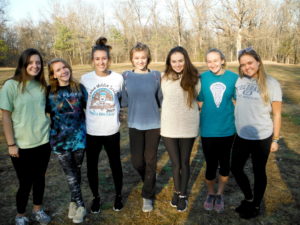
There are definitely things we can do to prevent school shootings. Without trying to oversimplify this complex issue, I want to address a couple of areas that we do have control over. I gathered data from many sources; note them at the end of the blog.
In fact, there is no accurate or useful ‘profile’ of students who engaged in targeted school violence. Most did well in school, with 41% getting A’s and B’s and only 5% were failing. So, don’t gloss over signs that your teen is struggling just because they have good grades. Almost half of school shooters were considered to be part of the mainstream crowd at school, with about 34% considered loners. Almost two-thirds never or rarely got into trouble at school, and most had no history of violence or criminal behavior. But there are “types of behaviors” that are common to planning or carrying out the attacks, and that is where prevention can come into play.
Most perpetrators had expressed or felt suicidal (78%) and depression (61%), though only a third had ever received a mental health evaluation. Most had trouble coping with significant loss or failures in their young lives before the attack (98%). These included failed romantic relationships, failing grades, family deaths and family illnesses. Thus, one way to prevent another tragedy is to get kids help when they show signs of depression or desperation. Individual and family counseling would give these kids tools to deal with stresses and emotions that might otherwise put them over the top.
Many attackers felt bullied, persecuted or injured by others prior to the attack, and said they had tried without success to get someone to intervene. Revenge was a motive for more than half of the attackers (61 percent); that’s why many shootings take place at a school or a workplace where shooters felt rejected. The most effective anti-bullying programs focus mostly on the bystanders, not the victim or perpetrator. Kids who feel included, valuable, and have a good sense of connection with their peers and teachers are not going to attack people. Schools need to do more than have adult-made, character-education, anti-bullying posters on the walls. Students need to have recurring dialogue with each other to resolve conflicts, learn social-emotional learning skills, and to create a close community. That would be a much more effective strategy than more metal detectors and teachers with guns.
In most cases there’s a long trail leading up to an actual act of violence, and the attacker’s observable behavior prior to the attack suggested he might be planning or preparing for it. Disturbingly, before most of the attacks, someone else knew about the idea or the plan, usually friends, schoolmates, siblings and others. In nearly two- thirds of the incidents, more than one person had information about the attack before it occurred. However, this information rarely made its way to an adult who could have intervened. Many girls tell me they don’t report sexual harassment experiences to adults at school because they’ve tried in the past and nothing was done. When students come to teachers with worries about a fellow classmate, schools need to take them more seriously and take some kind of action to be sure that teen has the support they need. We also need to help teens reframe the idea that telling an adult about their worries about a peer is “snitching”.
Nearly two-thirds of the attackers had a known history of weapons use, including knives, guns, and bombs, and most of them acquired their guns from home. Many also tend to be obsessed with guns, violent video games or movies. The 19-year-old who killed 17 people in a Florida high school used a semi-automatic AR-15 military-style assault rifle with “countless magazines” that he himself had purchased at age 18. First off, why does ANYONE need an assault rifle? Second, why are we allowing 18-year olds to purchase them? Third, why was a depressed, troubled teen who was expelled from school allowed by his guardians to own such a weapon? The lobbyists for the NRA should not be calling the shots when it comes to common sense, guns, teenagers, and adults in this country.
Finally, I encourage parents to allow their teenagers some privacy, including not reading their journals. But if a teen seems depressed, withdrawn, socially isolated, aggressive, spiraling downward, and especially if they won’t share with parents, then mom and dad should look everywhere for clues as to their child’s mental health. That includes reading diary entries, social media posts, and phone texts to look for signs of danger, i.e. any talk of hurting themselves or others. In most cases, adults would have seen posts about dwelling on experiences of rejection, on injustices or unrealistic fears, attempts to recruit peers in their plans, or an obsession with weapons and plans to take revenge on people. Pay attention to these red flags and take immediate action to get them help.
The best way to prevent school shootings is not so much to preemptively catch shooters, because we know that’s very difficult, but actually to address very widespread problems that are at the root of why kids become perpetrators. Focus some energy on boosting the connections of the entire school community as well as be more attuned to kids who show signs of being troubled. Empower the “bystanders” by taking their concerns more seriously. Make sure every kid with any level of mental health concern gets treatment, especially those with current losses or failures that might trigger an aggressive reaction. Finally, as a caring, national community, start using your voices and votes to get significant gun reform.
Resources:
10 Myths about school shootings; Bill Dedman, NBC News.com
Warning signs for youth violence; APA.org
5 Questions for Peter Langman; APA.org, November 2017, volume 48
School Shooters: Understanding High School, College, and Adult Perpetrators
Characteristics common among school shooters